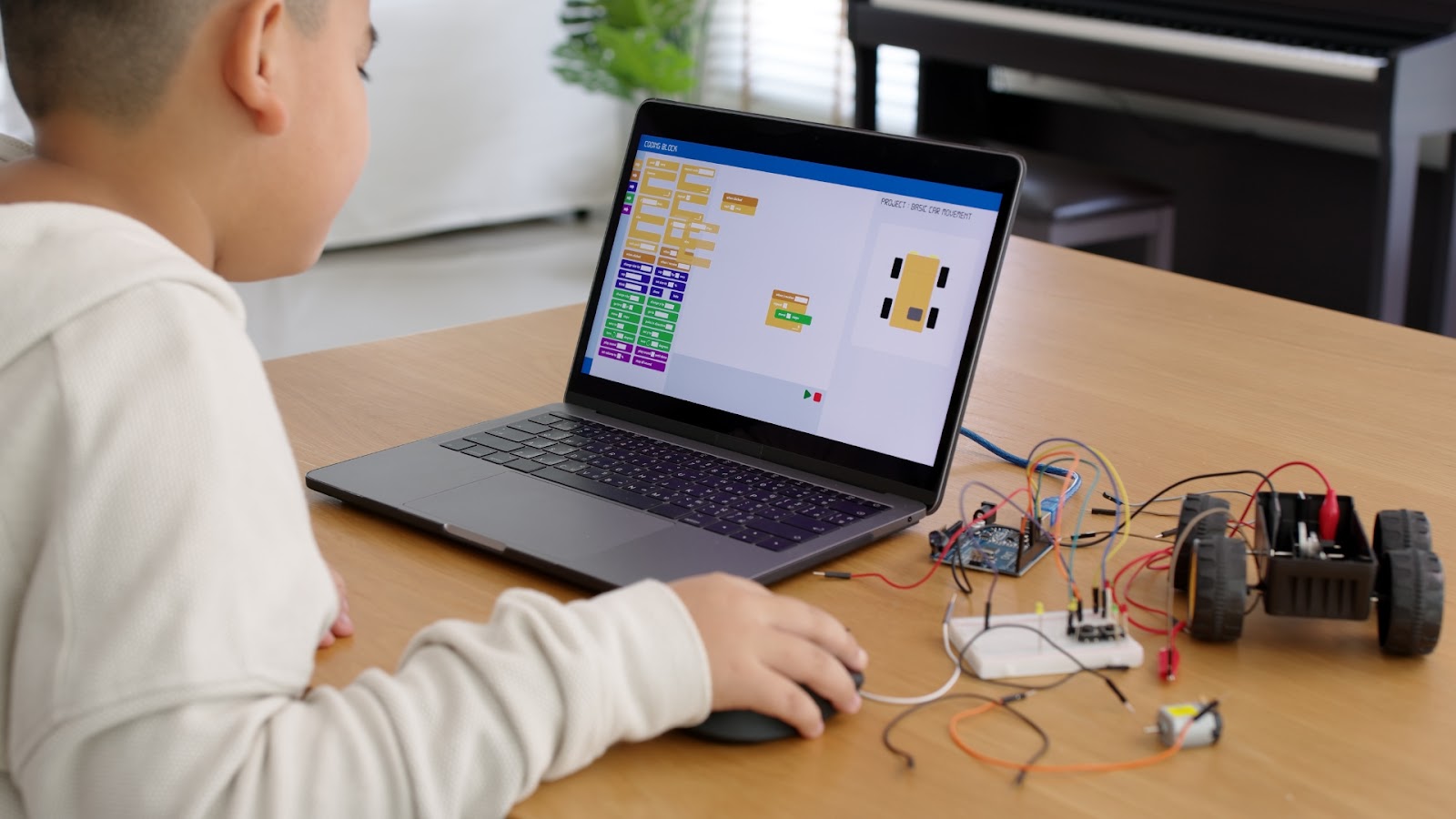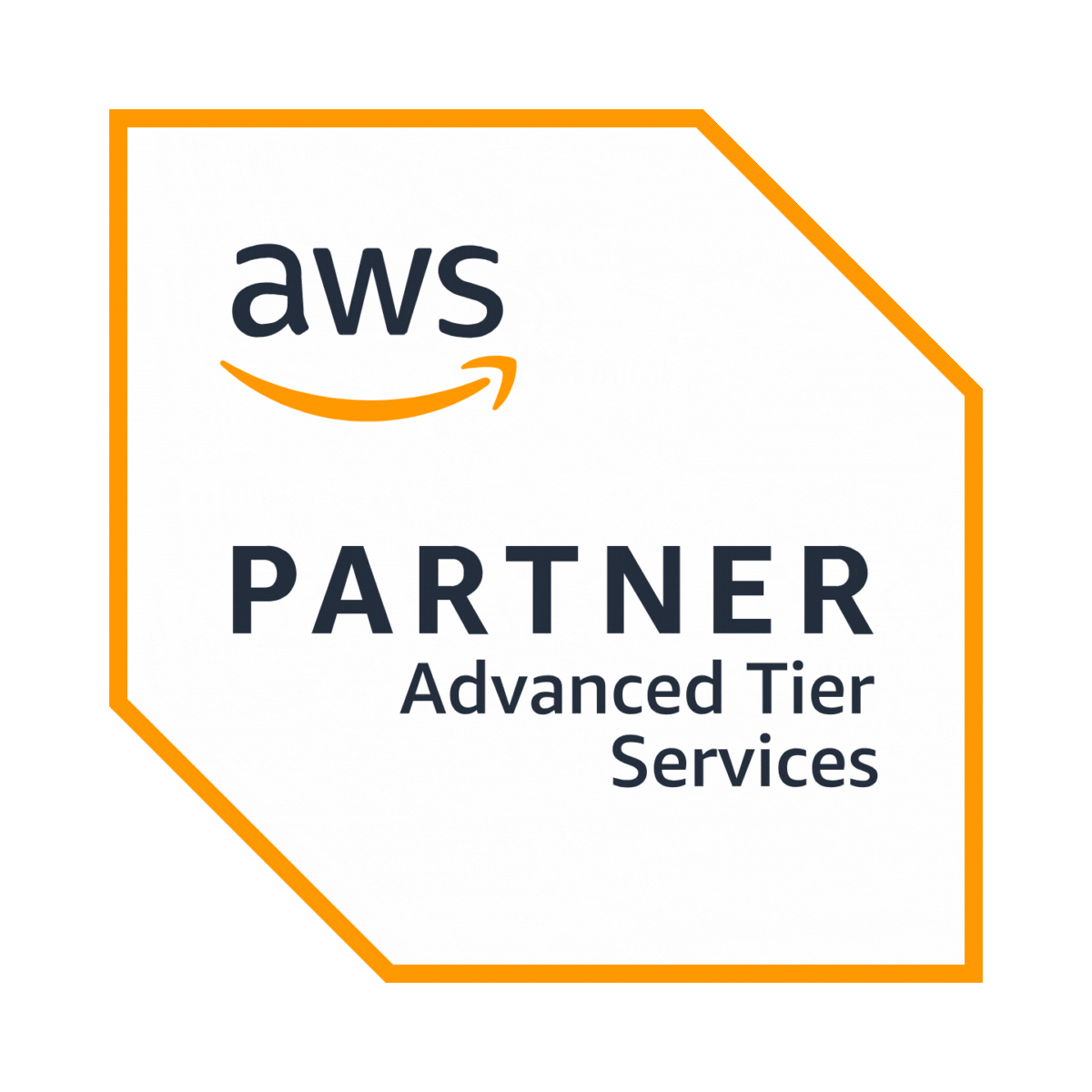Higher education has long been a cornerstone of personal and professional development, but in recent years, the traditional education system has faced significant challenges. From rising tuition costs to growing class sizes and the increasing demand for personalized learning, universities and colleges are under immense pressure to meet the needs of a new generation of students.
In this evolving landscape, artificial intelligence (AI) presents an opportunity for educational institutions to not only address these challenges but also create a smarter, more efficient future for higher education.

Challenges facing higher education
- Rising costs: According to the National Center for Education Statistics (NCES), tuition costs have more than doubled in the past two decades, putting education out of reach for many students and families.
- Increasing demand for personalized learning: As students’ learning needs grow more diverse, traditional teaching methods struggle to meet these demands. Personalized education can enhance student engagement, but it’s difficult to scale in a classroom of hundreds.
- Administrative inefficiencies: Universities spend significant time and resources on administrative tasks such as scheduling, grading, and tracking student progress. These routine tasks can drain valuable time that could otherwise be spent on direct student support and educational innovation.
AI as a game changer in higher education
In this context, AI is emerging as a powerful tool to help institutions stay relevant, reduce costs, and improve the quality of education. AI technologies are being used to optimize various aspects of higher education, including:
- Enhancing the learning experience: AI can provide personalized learning paths, create adaptive assessments, and even generate course materials tailored to individual student needs.
- Streamlining administrative tasks: AI can automate scheduling, grading, and resource allocation, freeing up faculty and staff to focus on high-impact work.
- Improving student outcomes: By analyzing vast amounts of data, AI can identify patterns, provide real-time insights, and predict student performance, helping educators provide targeted support to struggling students.
As the world rapidly shifts towards a more data-driven, technology-enabled society, the need for AI-powered innovation in higher education is more pressing than ever before. AI is poised to be the catalyst that drives the transformation of education, ensuring that institutions can provide more affordable, efficient, and inclusive learning environments.
2. AI applications in higher education to revolutionizing the learning experience
Artificial intelligence is playing a transformative role in shaping the way students learn and interact with educational content. In higher education, AI-powered applications are helping institutions move away from one-size-fits-all teaching methods toward more personalized, efficient, and engaging learning experiences. Whether it's through adaptive learning systems, AI-powered tutoring, or automated content creation, AI is reshaping how both students and instructors experience education.
Personalized learning for individual needs
Personalized learning has been a long-standing goal of educators, but achieving it at scale has always been a challenge. AI allows institutions to deliver individualized learning paths for students, optimizing educational content to their unique strengths, weaknesses, and preferences. AI-powered systems can analyze student performance in real-time and adapt content accordingly to maximize learning outcomes.
With AI, institutions can ensure that every student gets the right resources, at the right time, and in the right format, making learning more accessible and effective.
AI-driven course content creation
AI is also revolutionizing how educational content is created. Traditionally, instructors spend considerable time designing course materials, including lecture notes, quizzes, and assignments. With AI, much of this content can be automatically generated based on student performance and learning patterns.
AI can automate much of the content creation process, allowing educators to spend more time on high-value activities like mentoring and student interaction.
24/7 AI-powered support for students
One of the most significant advantages of AI in higher education is its ability to provide round-the-clock support to students. AI-powered tutoring systems can provide real-time assistance on any topic, from answering questions to offering step-by-step explanations and even personalized practice problems.
According to Forbes, 84% of students said they would prefer using an AI-powered tutor for additional study help outside of class time, highlighting the increasing demand for anytime learning.
By providing students with always-available AI tutors, educational institutions can cater to the individual needs of each learner and ensure no student falls behind.
Adaptive assessments and grading
The traditional approach to assessments and grading can be time-consuming for educators, and often doesn’t account for personalized learning needs. AI systems can automate this process, evaluating student responses in real-time and offering adaptive assessments that evolve based on a student’s performance.
AI-powered grading systems not only save educators time but also ensure fairness, reduce human error, and create a more consistent experience for students.
3. AI in managing campus operations and student data
While AI’s potential in improving the learning experience is well-documented, its ability to streamline administrative tasks and manage vast amounts of student data is just as transformative. Universities and colleges are often burdened with administrative inefficiencies, from scheduling conflicts to resource allocation and student data management. AI offers a solution by automating routine processes and providing decision-makers with real-time insights to help make more informed, data-driven decisions.
Data analysis and decision-making
Educational institutions gather a tremendous amount of data daily, from student grades to attendance records, online course interactions, and faculty performance. However, managing and analyzing this data manually can be overwhelming and inefficient. AI helps institutions process and interpret this data, uncovering valuable insights that inform everything from student engagement to curriculum development.
By using AI to analyze and synthesize data, higher education institutions can make smarter, data-driven decisions that enhance both operational efficiency and student success.
Automating administrative tasks
Administrative tasks in higher education, such as student admissions, course scheduling, and answering common queries, are often time-consuming and resource-heavy. AI can automate these repetitive tasks, freeing up staff to focus on higher-priority issues, like strategic planning and student engagement.
Chatbots powered by AI are already being used by universities to automate common tasks, such as answering frequently asked questions about tuition, admission requirements, and course schedules. For instance, the University of Melbourne uses an AI chatbot named AskU to assist students 24/7 with routine queries.
By automating these administrative functions, AI can significantly reduce operational costs and ensure that educational staff can focus on high-value activities, such as improving the quality of education and student support.
AI in resource allocation: Optimizing faculty and facilities management
Effective resource allocation is a critical factor for universities, especially as campuses continue to grow in size and complexity. AI helps institutions better manage their resources, be it faculty, classrooms, or equipment, ensuring that resources are allocated efficiently to meet the demand.
AI systems can help optimize faculty scheduling by analyzing course demand, faculty availability, and student enrollment data to create an optimal class schedule. Similarly, AI can help with the allocation of classroom space, ensuring that rooms are used effectively and that there are no scheduling conflicts.
With AI’s help, higher education institutions can manage both their human and physical resources in ways that maximize efficiency and reduce waste, leading to better outcomes for both students and faculty.
AI in predictive analytics for student success
Predicting student outcomes, such as academic success or dropout rates, is one of the most important functions of AI in higher education. By analyzing historical data, AI can provide valuable insights into which students are at risk and suggest interventions before problems escalate.
By leveraging predictive analytics, AI helps universities ensure that students receive the support they need before falling behind.

4. Enhancing accessibility in higher education with AI
One of the most profound impacts of AI in higher education is its ability to enhance accessibility for students with disabilities. Traditional educational systems, with their one-size-fits-all approach, often overlook the diverse needs of students with learning difficulties, visual or hearing impairments, and other disabilities. AI is breaking down these barriers by offering personalized learning environments and assistive technologies that enable students to thrive regardless of their challenges.
Assistive technologies for students with disabilities
AI has opened up a wide range of assistive technologies that support students with disabilities, allowing them to engage more fully with their educational experience. These tools are designed to be adaptive, meeting the individual needs of students in ways that were previously not possible in traditional classrooms.
- Speech-to-text and text-to-speech systems: AI-powered speech recognition tools, such as Dragon NaturallySpeaking and Google’s Live Transcribe, help students with hearing or speech impairments by converting spoken words into text or vice versa.
- Real-time captioning: Services like Live Captions provide real-time captions during lectures, helping students who are hard of hearing to follow along with the content. This technology is especially useful in large lecture halls where lip-reading may not be sufficient.
- AI for visual impairments: Tools like Aira and Be My Eyes use AI-powered computer vision to assist visually impaired students, allowing them to navigate their environment or read printed materials with the help of an AI-powered assistant or a live volunteer.
These technologies not only make education more inclusive but also empower students to take charge of their learning journey, enabling them to overcome barriers that were once insurmountable.
Personalized learning environments for diverse learning needs
One-size-fits-all teaching methods often fail to accommodate students with dyslexia, ADHD, or other cognitive learning challenges. AI can create adaptive learning systems that modify course materials and delivery methods based on the individual needs of each student. These systems analyze student data and adjust the pacing, format, and level of difficulty to ensure that students can engage with the material at their own pace.
By providing personalized learning experiences, AI ensures that every student, regardless of their challenges, has the opportunity to succeed.
AI-based language translation and multilingual support
Language barriers can also prevent students from fully participating in their academic environment, especially for international students or those whose first language is not the language of instruction. AI-powered translation tools are helping to bridge these gaps by offering real-time translation services in multiple languages, making education more inclusive for a global student body.
By offering instant translation and multilingual capabilities, AI is making educational content more accessible and enabling global students to interact, learn, and succeed in an increasingly diverse academic environment.
AI-driven accessibility for online and remote learning
The rise of online learning has created opportunities for students who may have physical disabilities or who are geographically distant from traditional campuses. AI has become an essential tool for making online learning more accessible and engaging for these students. AI can power tools like virtual classrooms, automated tutors, and interactive learning assistants, ensuring that students with various learning needs can continue their education remotely.
These AI tools not only increase the accessibility of online education but also make learning more engaging and inclusive for students who may otherwise have been left behind.
5. The future of AI in higher education: What’s next?
AI in higher education is still in its early stages, but its potential is vast and rapidly growing. As technology advances and educational institutions begin to see the true benefits of AI, the future of AI in higher education promises to reshape the way students learn, faculty teach, and universities operate. From AI-powered career services to research advancements, the future holds tremendous opportunities for educators, students, and administrators alike.
AI-powered career services: Matching students with the right career paths
As the job market continues to evolve, universities are under pressure to prepare students for careers in industries that may not have even existed when they first enrolled. AI is helping institutions provide personalized career services that match students' skills, interests, and aspirations to the most relevant career paths.
By leveraging AI for career services, universities can help students make more informed career decisions and find better job opportunities that align with their abilities and interests, providing a smoother transition from academia to the workforce.
AI in research: Accelerating discovery and collaboration
AI is transforming research in higher education by making it easier for academics to analyze large datasets, predict outcomes, and identify new patterns or correlations. Researchers can use AI to accelerate their work, identifying breakthroughs that would otherwise take years of manual analysis. Furthermore, AI facilitates collaboration by enabling research teams to share data more effectively, analyze results collaboratively, and even use AI models to generate research ideas or hypotheses.
AI will continue to enhance the research process by offering more powerful analytics tools, faster insights, and greater collaboration across disciplines, leading to more discoveries and innovations in various fields.
AI-powered classrooms and virtual learning environments
The concept of the AI-powered classroom is quickly becoming a reality. In the future, we’ll see classrooms where AI systems monitor students' behavior, track engagement, and assess understanding in real-time. Virtual classrooms, powered by AI, will offer immersive learning experiences, such as virtual labs, AI-driven simulations, and interactive content that adapts to student behavior.
Universities like MIT and Stanford are experimenting with AI-driven platforms that use data analytics to tailor class content to the students’ progress. Virtual reality (VR) and AI-powered simulations will provide students with hands-on experience in a virtual environment, allowing for better skill development and greater engagement.
The future AI-powered classroom will transform traditional education, providing students with immersive, engaging, and adaptive learning experiences that were previously unimaginable.
Challenges to AI adoption in higher education
While the potential of AI in higher education is immense, there are still several challenges that institutions must overcome to fully realize its benefits. Some of the main hurdles include:
- Data privacy and security: The collection and analysis of student data raise concerns about data privacy and the potential for breaches. Institutions must ensure they have robust security protocols in place to protect sensitive information.
- Faculty training: AI’s effectiveness in the classroom depends heavily on educators' ability to use these tools effectively. Training faculty to use AI tools and ensuring that AI complements traditional teaching methods is critical.
- Cost of implementation: While AI can save costs in the long term, the initial investment in AI tools and infrastructure can be substantial. Universities need to consider the return on investment (ROI) when deciding to implement AI solutions.

How universities can prepare for AI
To successfully integrate AI into their operations, universities need to take a strategic approach:
- Start small: Begin by implementing AI in areas where it can make an immediate impact, such as grading, administrative tasks, or personalized learning.
- Focus on data infrastructure: Ensure that institutions have the right systems in place to collect, analyze, and utilize student data in a way that can drive meaningful insights.
- Collaborate with AI experts: Work with AI consulting companies or AI agent development companies to ensure that the right technologies and solutions are chosen to fit the institution’s specific needs.
By carefully planning and strategically implementing AI, universities can create a future-ready learning environment that improves student outcomes, reduces costs, and prepares graduates for the modern workforce.
6. How to get started with AI in higher education
Adopting artificial intelligence in higher education may seem like a daunting task, especially with the complexity of integrating new technologies into existing systems. However, the journey can be broken down into clear, actionable steps that will help institutions make the most of AI’s capabilities. Whether you’re a university looking to enhance the learning experience, streamline operations, or improve student outcomes, here are some key steps to guide your institution through the adoption process.
Step 1: Assess your institution’s needs
Before diving into AI implementation, universities must first assess their current needs and identify the areas where AI can bring the most value. This involves:
- Identifying pain points: Look at your institution's pain points and areas that can benefit the most from AI. Is it improving the quality of education, reducing administrative workloads, or providing better support for students with disabilities?
- Understanding AI capabilities: Familiarize yourself with the wide array of AI applications available for higher education, such as AI-powered tutoring, automated grading, personalized learning platforms, and predictive analytics for student success.
Step 2: Choose the right AI tools and solutions
With a clearer understanding of your needs, you can begin to explore and select the most suitable AI tools for your institution. When choosing AI solutions, it’s important to consider factors such as:
- Scalability: Ensure that the AI solutions can grow with your institution. Whether you’re a small community college or a large university, the AI systems you select should be able to handle increasing amounts of data and scale as your institution grows.
- Integration with existing systems: Choose AI tools that can integrate seamlessly with your current infrastructure. This ensures that AI complements your existing systems (e.g., learning management systems, student information systems) and minimizes disruption during implementation.
- User-friendly interfaces: The chosen AI tools should be intuitive for both faculty and students to use. If AI is difficult to use or requires extensive training, its adoption may be limited.
- Example: If you’re implementing an AI-powered tutoring system, make sure that it can be easily integrated with your learning management system (LMS) for seamless operation.
Step 3: Build a data infrastructure to support AI
For AI to function effectively, it relies on access to large amounts of accurate data. As such, building a solid data infrastructure is a critical step in the AI adoption process. This involves:
- Collecting the right data: Gather data that will enable AI systems to generate insights. This can include student performance data, attendance records, demographic information, and more.
- Data security and privacy: Given the sensitivity of student data, it’s essential to ensure robust data security and privacy practices. Complying with regulations like FERPA (Family Educational Rights and Privacy Act) and GDPR (General Data Protection Regulation) is crucial.
- Data accessibility: Ensure that your data is structured and accessible to the AI tools that will analyze it. This might involve setting up a centralized data repository or cloud-based system.
A strong data infrastructure will provide the foundation needed for AI tools to deliver actionable insights, predict trends, and improve educational outcomes.
Step 4: Train faculty and staff
AI adoption in higher education requires more than just technology; it also requires people. Faculty and staff need the knowledge and training to make the most of AI tools and incorporate them into their workflows. Training can be broken down into two key areas:
- AI training for faculty: Faculty members should be trained on how to use AI tools for tasks like grading, creating personalized learning plans, and using AI-driven analytics to improve teaching methods.
- Training for administrative staff: Administrative staff should also receive training on how AI tools can automate routine tasks such as admissions, scheduling, and student communications.
Step 5: Start small, scale over time
AI adoption doesn’t need to be an all-or-nothing approach. Start by implementing AI in areas where the potential impact is the greatest and gradually expand its use. Some institutions begin with AI-powered tutoring or automated grading and then move on to more complex applications like predictive analytics for student success or adaptive learning systems.
- Example: Begin with a pilot project, such as introducing an AI-driven grading system in a small number of courses. After assessing its effectiveness, you can gradually scale it across departments and courses.
- According to McKinsey, educational institutions that started with pilot projects and scaled AI over time reported a 50% improvement in both the adoption rate and student satisfaction with AI-powered systems.
This incremental approach will allow institutions to test AI applications, identify challenges, and refine processes before a full-scale rollout.
Step 6: Measure and evaluate AI impact
Once AI tools are implemented, it’s essential to continually assess their effectiveness. Collect feedback from students, faculty, and administrators, and use this data to measure the success of AI initiatives. Key performance indicators (KPIs) to track might include:
- Improved student outcomes: Metrics like graduation rates, retention rates, and overall academic performance can be tracked to see how AI influences student success.
- Efficiency improvements: Measure the time saved through AI automation and the cost savings in administrative operations.
- User satisfaction: Survey faculty and students to gauge their experience with the AI tools and determine areas for improvement.
By continually measuring and evaluating AI initiatives, universities can refine their approach and maximize the benefits of AI.
Embracing AI for a smarter future in higher education
As we look toward the future of higher education, it’s clear that artificial intelligence and data will continue to be a driving force in shaping both the student and administrative experience. AI's potential to transform education, from creating more personalized learning environments to streamlining administrative tasks, offers unparalleled opportunities for educational institutions to enhance their overall effectiveness and efficiency.
A revolution in personalized learning
AI is helping higher education shift from traditional, one-size-fits-all teaching methods to customized learning experiences that cater to the individual needs of each student. With AI, we can offer tailored educational paths, adaptive content, and 24/7 AI tutoring, ensuring that every student has the opportunity to reach their full potential. This personalization goes beyond just academic support; it extends to students' emotional and social needs, helping them stay engaged and succeed.
Unlocking operational efficiencies
AI is streamlining the operational side of higher education, reducing the administrative burden and providing university staff with more time to focus on high-value tasks. From automating grading and administrative tasks to optimizing classroom schedules and resource allocation, AI helps institutions operate more efficiently. By eliminating repetitive, time-consuming processes, AI ensures that resources are better utilized, staff workloads are reduced, and operations are more streamlined.
Increasing accessibility for all students
AI is breaking down barriers for students with disabilities, offering a variety of assistive technologies that allow them to engage with educational materials and participate in campus life. Through real-time captioning, speech-to-text systems, and AI-powered learning platforms, higher education is becoming more inclusive and equitable for all learners.
The future of research and career services
AI is not only improving the academic side of higher education but also playing a key role in accelerating research and providing better career services. With AI's ability to process large data sets and offer predictive insights, researchers can identify trends and breakthroughs faster than ever before. In addition, AI-powered career services help match students with the right career paths by analyzing their skills, experiences, and aspirations.
AI in decision-making and institutional strategy
Beyond the classroom, AI can drive institutional decision-making, offering predictive analytics on factors like student retention, dropout rates, and even faculty performance. By analyzing trends and patterns in data, universities can make more data-driven decisions and adjust their strategies to improve student success, faculty satisfaction, and operational efficiency.
AI’s full potential in higher education
AI is poised to continue its rapid evolution, and as its capabilities expand, so too will its impact on higher education. Institutions that embrace AI today will be well-positioned for long-term success, benefitting from enhanced learning experiences, smarter operations, and more inclusive environments. However, the successful integration of AI requires thoughtful planning, ongoing evaluation, and a commitment to addressing challenges like data privacy, faculty training, and the financial costs of implementation.
Universities must work with AI consulting companies to select the right tools, train faculty and staff, and continuously measure the impact of their AI initiatives to ensure the technology is used effectively.
Final thoughts
Artificial intelligence in higher education is not a passing trend; it is a revolution in the making. By embracing AI, universities and colleges have the opportunity to enhance learning, optimize operations, and create a more accessible, inclusive, and personalized educational experience for all students. As AI continues to evolve, its influence will expand, creating smarter campuses and more efficient academic environments that will redefine the future of education.


















